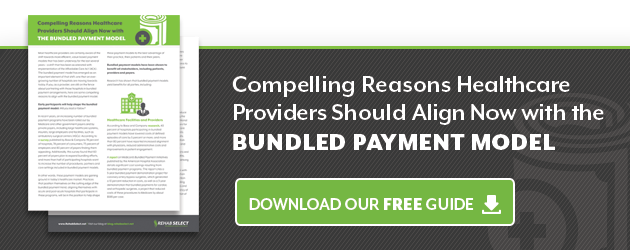 The bundled payment model is a relatively recent development in the healthcare industry and one that is gaining ground against the traditional fee-for-service healthcare payment model. It is designed to add value to the care process, working to contain or lower costs while maintaining or improving quality. When it comes to recognizing the beneficiaries of this payment model, payers—be they government or private ones—are the most obvious. However, bundled payment plans can also convey benefits to other parties involved in the care process, including healthcare providers and their patients.
The bundled payment model is a relatively recent development in the healthcare industry and one that is gaining ground against the traditional fee-for-service healthcare payment model. It is designed to add value to the care process, working to contain or lower costs while maintaining or improving quality. When it comes to recognizing the beneficiaries of this payment model, payers—be they government or private ones—are the most obvious. However, bundled payment plans can also convey benefits to other parties involved in the care process, including healthcare providers and their patients.
The bundled payment model handles reimbursement differently than traditional fee-for-service payment. Rather than paying each provider separately for each service, a pre-set amount is paid for a defined episode of care. That lump sum is then divided among the providers involved in caring for that patient. If a group of providers provides high-quality care while keeping costs at or below the target price, they are typically financially rewarded via shared savings agreements while providers who run over budget are generally held to financially account for at least part of that overage.
How Payers Benefit
The system of sharing both benefits and risks with providers that is inherent in the bundled payment model creates powerful incentives for those providers to streamline the care process and cut costs, while quality benchmarks ensure that care quality is not affected by cost-cutting measures. The result is better value for each dollar spent by payers. According to research published by Strategy&, 40 percent of hospitals participating in bundled payment plans achieved cost reductions of 5 percent or more for defined episodes of care, and that greater level of cost-efficiency benefits the bottom line of healthcare payers.
Advantages For Providers
Healthcare providers who participate in bundled payments can benefit financially for meeting cost containment and quality benchmarks, since shared savings plans and performance bonuses are built into most bundles. They also benefit from the incentives these bundles create to trim the fat from the care process. A more efficient process allows them to offer a better standard of care to their patients and provides them with the opportunity to attend to a higher volume of patients without compromising that standard of care. These factors lead to benefits that include improved patient outcomes, greater patient satisfaction, and a healthier bottom line.
Benefits to Patients
In order for the bundled payment model to achieve its goals of increasing cost-efficiency and quality of care, there must be a sharp emphasis on coordination of care throughout each episode of care. That means more efficient communication and cooperation between providers involved in each step of the care process. This benefits patients by reducing the risk of important details falling through the cracks during an episode of care. That typically results in less time wasted on redundant tests or treatments, better follow-up care—a notoriously weak link in the fee-for-service model—reduced risk of medical complications, fewer avoidable rehospitalizations, better overall patient outcomes and fewer out-of-pocket expenses.
The fact is, all stakeholders in the care process can be beneficiaries of the bundled payment model. A solidly designed, well-implemented bundled payment plan can yield important benefits to payers, such as government health programs, healthcare systems, health insurers and employers, as well as to healthcare facilities/providers and the patients they serve.





